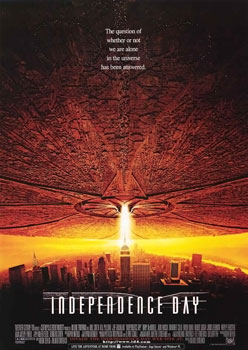In Hollywood movies, the Fourth of July marks a moment that requires heroes to confront things if they are to realize the future to which they aspire.
In Steven Spielberg’s classic 1975 movie “Jaws,” the tension is not between the shark and the community it terrorizes, but between facing the shark and pretending the crisis is not happening.
The story takes place in a New England beach town, where the body of a young woman washes ashore just before the summer tourist season is supposed to begin. When the medical examiner concludes that a shark attacked and killed the woman, the police chief (Roy Schneider) orders the beaches closed. But the mayor (Murray Hamilton) bullies him into rescinding the order, citing the revenue the town stands to lose.
The next part of the movie is about people refusing to face facts. A little boy is killed, and again the evidence suggests he was mauled by a shark. Local fishers go out on the water to find the shark and kill a rather small-looking one that they bring triumphantly to shore. But when they open its belly there is no trace of the boy’s flesh. Nor does the small shark’s jaw match the bite marks found on the corpse of the young woman who was killed a week earlier. But even after an oceanographer finds a massive shark’s tooth embedded in the hull of a destroyed fishing boat, the mayor refuses to concede that there might be a great white shark — a rare, deadly predator — roaming the waters close to the shore. The New England summer must go on.
The crisis comes on the Fourth of July, when the beaches are packed with people celebrating Independence Day. The great white shark, whose existence the mayor has refused to accept, attacks and kills. Finally, faced with irrefutable evidence of the shark’s existence, the mayor allows three men — the police chief, an oceanographer and a grizzled shark hunter — to go after the predator. The three succeed in killing the shark, but at great cost. Several attempts fail and one of the three men is killed. The final confrontation between man and beast is a gory, albeit creative, death scene.
In a dramatic public confrontation, the mother of the dead boy tells the police chief that, by refusing to take necessary action in a timely manner, he is responsible for the death of her son. While calling out his incompetence does not make the problem disappear, it does provide an opening for those who do know how to resolve the crisis to take the necessary action.


